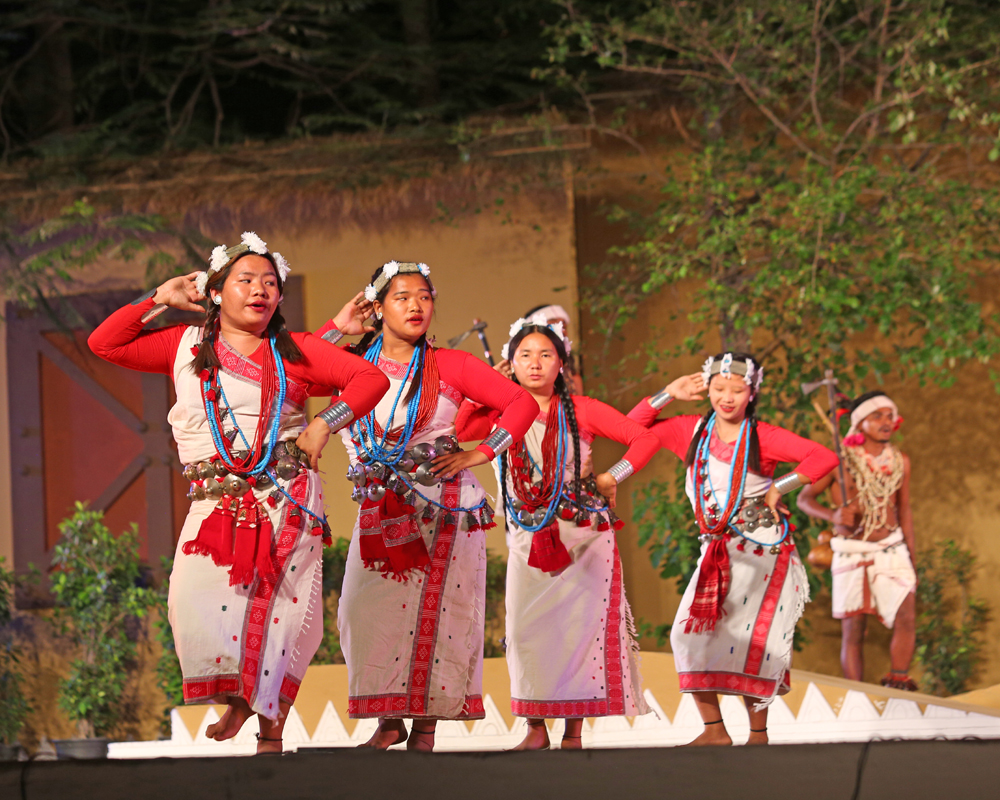A festival where stories danced and traditions found their place, says SAKSHI PRIYA
Adi Rang Mahotsav at the National School of Drama brought together dance, music, theatre, and crafts in a way that felt less like an event and more like a living tradition. Every performance had a pulse of its own, drawing people into a world where heritage speaks through movement, rhythm, and expression.
For three days, the stage transformed into a world where traditions came alive. The festival pulled you in, wrapped you in its colours, sounds and spirit. Every performance carried something ancient yet enduring, not frozen in time but evolving, breathing, refusing to be forgotten.
The Stage Speaks
The festival opened with Rabha from Assam, performed by the Sanskriti Group. The dancers moved in perfect harmony, their steps reflecting deep-rooted traditions. Bardwi Sikhla and Dahal Thungri followed, their movements flowing like a river, each step carrying a story.
Then came Gussadi from Andhra Pradesh, a performance filled with energy. The dancers, wearing elaborate headdresses, filled the space with power and presence. Siddi Dhamal from Gujarat brought something entirely different. a rare look into the Afro-Indian Siddi community’s traditions. The rhythm was infectious, the energy unstoppable.
Odisha’s Singari dance had a quiet beauty, each motion painting a picture. The Paika dance from Jharkhand carried the strength of warriors, every movement reflecting courage and discipline.
Theatre also had its moment. Bana Guda, directed by Pradeep D. Majhi, stood out for its simplicity and depth. It did not rely on elaborate sets or effects; its strength lay in the performances, in the voices that commanded attention, in emotions that made every moment feel real.
The Craft Mela
Beyond the stage, the Craft Mela was filled with colours, textures, and the skill of artisans who have kept their crafts mesmerised. Madhubani paintings told stories in bold strokes, brass Bhareva sculptures shone under the light, and Assam’s handwoven fabrics carried patterns full of meaning.
Kantha embroidery spoke through its stitches, clay dolls had expressions full of life and wooden crafts showed precision that only comes with years of practice. A special exhibit on Santhali musical instruments, curated by researcher Dr Partha Gupta, gave a rare insight into music that has been a part of daily life for centuries.
The drumbeats, the voices, the movements, they did not fade when the festival ended. They stayed with those who saw them, like an old song that keeps playing in the mind long after it is heard.This was not about preserving the past in a museum. It was about letting traditions grow, giving them space in today’s world. These stories and dances are not fading away. They are still here, strong as ever.
Spirits in Step
Tribal dance is full of life and energy, bringing people together through stories, music and movement. The joyful expressions make it a truly special experience.

























